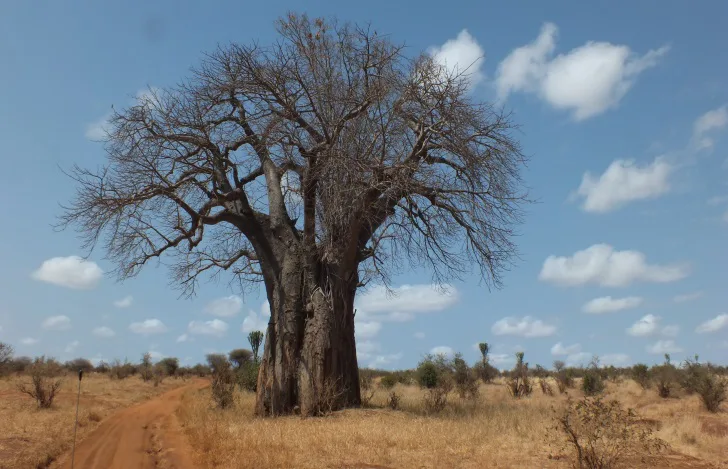
By: Katie MacDonald, PhD
An “Upside Down Experience” in Tanzania
Tarangire National Park, the focus of our five day field excursion, is a two hour drive from our Center. On this expedition, our mission was to learn field skills in conducting a wildlife census, studying elephants, developing land use management plans, gaining an understanding of community wildlife management, and of course having some fun!
What’s astonishing in this park and its environ are the majestic baobab trees that tower over every other living entity. The scientific name — Adansonia digitata — is named in honor of Michel Adanson, the naturalist who “first saw” the tree in Senegal about 1750. Several questions lingered among the students about this mystical tree, and they would ask me, Kioko: “How old it that tree?” “Where are the ‘babies’?” “Why is the tree upside down?”

The tree has massive trunk of over 100 feet circumference, though it only grows to height of about 90 feet. The colossal trunk is actually a number of stems fused together. On aging, the trunk becomes hollow and leaves a well-sheltered groove known to have been used as prisons, dairies, post offices, and pubs. Elephants are often seen drawing water from the trunk, which can store up to 120,000 litres of water. Most of the ancient baobab trees are over 1,000 years old, having survived being persistently gorged by elephants. One tree in South Africa — that is now a famous Tree Bar in Limpopo — is said to be 6,000 years old… it sounds like an exaggeration!
For such a big “guys” to survive the harsh droughts, they remain lifeless for a big part of the year, with the twigs appearing like roots. One African legend says that in the last days of creation, having become tired, God gave animals tree seedlings to plant, but the “stupid” hyena planted the baobab seedlings upside down. The baby baobab trees are believed to be taken away by devils that dwell on them. However, from my ecological research in the park, elephants have decimated most of the young baobab trees. After the amazing world of baobabs, we are now back in Moyo Hill.

Related Posts


Alumni Reflections: Stories of the Return to Kenya
